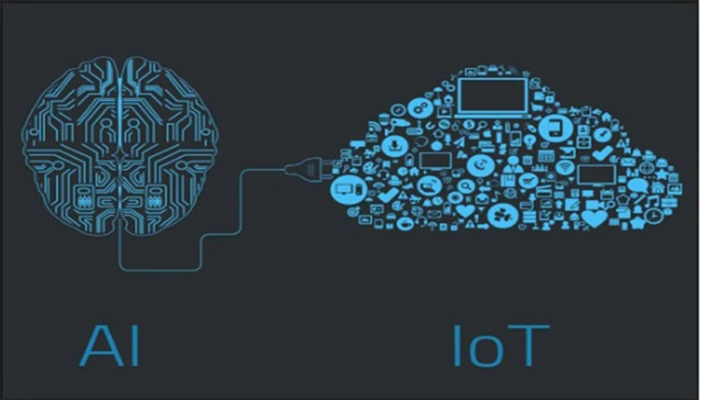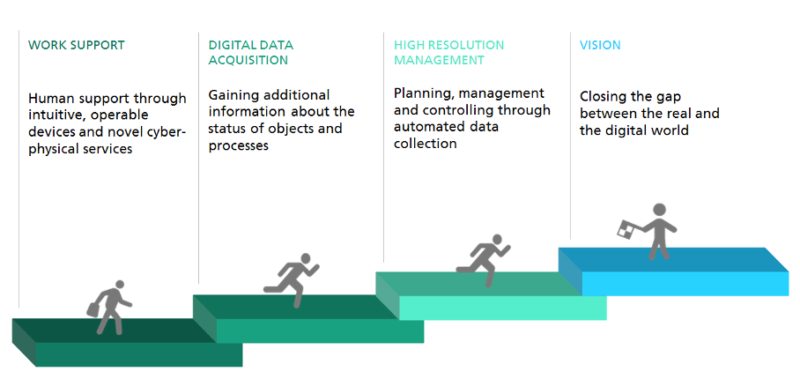IoT applications have grown in size, complexity, and functionality over the last decade. In early IoT installations, networks of sensors, wireless sensor networks, and RFID (Radio Frequency Identification) devices were deployed in small to medium-size deployments within an enterprise. Furthermore, they were primarily concerned with data collecting and processing, with little intelligence. In this article, we will discuss enhancing IoT devices to make them able to reason without the need for human intervention. We will go through concepts about ‘Smart object’ and how AI enables the ability to make the decision of ‘things’.
What are “Smart Objects”?
The Internet of Things (IoT) envisions a world in which ordinary things are linked to the Internet, recognized, and communicate with other devices. These are commonly referred to as “smart objects”. The goal is to digitize applications and processes in order to make them simpler and more efficient.
Smart objects (also known as Intelligent Objects) are objects that have location and communication technology and are linked to a communication network, called the Internet of Things (IoT). These intelligent things are capable of entering, storing, and processing data, as well as interacting with other objects, systems, or people. They can be embedded or fixed in other objects so that they can collect location and sensor data, as well as perform decision and control activities.
Smart objects in the Internet of Things bridge the gap between the physical and digital worlds and provide new capabilities:
- Acquisition of real-time data inside operational processes.
- Information processing and decision-making are decentralized.
- Completely independent execution.
These features provide substantial added value to both businesses and individuals:
- Work Support: Assisting individuals with intuitive, user-friendly gadgets and new cyber-physical services.
- Digital data processing: obtaining more information about operations at more frequent intervals.
- High-Resolution Management: Planning, management, and control are aided by automated data collecting.
Examples of Smart Objects
- Socially assistive robots that train or help particular user groups such as the elderly with motor difficulties and disabled children.
- Industrial robots perform arduous jobs (such as picking and packaging) in warehouses, industrial factories, and power plants.
- Intelligent devices that foresee and anticipate failure scenarios while also scheduling autonomously appropriate maintenance and repair operations like ordering of spare parts, scheduling technicians visits.
- Connected vehicles gather and communicate information about their driving environment with other vehicles, pedestrians, and road infrastructure in order to optimize routes and increase safety.
- Self-driving cars, which will drive themselves with better efficiency and safety without the instructions of drivers.
- Intelligent pumps that work independently to detect and prevent leaks in water management systems.
Cognitive and Reasoning in IoT
The process of obtaining information and understanding through ideas, experience, and senses is referred to as cognition. So, cognitive IoT may be considered as an extension of IoT that is capable of comprehending, reasoning, and learning. When comparing human cognition with cognitive IoT, these three elements of cognition have different meanings. To ‘understand’ in the context of IoT would imply being able to collect huge amounts of data from the network and deduce the underlying meaning of the data. It would be capable of creating concepts, identifying different entities, and defining relationships between them.
The capacity of an IoT to ‘reason’ means that it should be able to discover suitable answers to questions or solve relevant issues without being explicitly coded. Finally, a cognitive IoT should be able to ‘learn,’ that is, autonomously infer new information from the data at hand using previous knowledge.
Blending AI into the Internet of Things
 Source:https://solaceinfotech.com/blog/wp-content/uploads/2020/04/AI-adotion-within-IoT-ecosystem.jpg
Source:https://solaceinfotech.com/blog/wp-content/uploads/2020/04/AI-adotion-within-IoT-ecosystem.jpg
To support these capabilities, we have lately seen the development and spread of IoT applications that leverage Artificial Intelligence and Smart Objects. AI is the study of establishing intelligence in computers, allowing them to do activities that previously needed the human intellect. Smart objects are distinguished by AI’s capacity to perform application logic in a semi-autonomous, disconnected manner from the centralized cloud.
In this approach, they can reason about their surroundings and make optimum judgments that aren’t always susceptible to central supervision. As a result, smart things may function without being constantly linked to the cloud. They may, however, connect to the cloud when necessary to exchange information with other passive objects. For example, when the smart objects need information on their state/status of the surrounding environment.
The data created by these Smart Objects (SOs) must be sent wirelessly, and the objects themselves must be clearly identifiable. All data sent across the network may be gathered in a distributed database and then monitored, analyzed, and processed.
- The SOs should be capable of performing small-scale local processing and have some intrinsic intelligence. More data, on the other hand, should be used for a data-driven choice. It may not always be possible to save these data for analytics within a SO.
- The macroscopic version enters the picture; data is disseminated and delivered to faraway locations for analysis. The analytical findings are then combined, and in some circumstances, the decision may be transmitted back to the SO, where the actuator may then execute its duty. The period between delivering the data and acting on it should be as short as possible; else, the choice would be meaningless. Traditional analytic techniques are incapable of capturing the whole essence of this large data set in real-time. On the one hand, the volume, velocity, and diversity are too great for complete analysis; on the other hand, the range of conceivable linkages and correlations between diverse data sources is far too broad for any analyst to manually comprehend.
When it comes to data, there is plenty of it in the IoT world, where massive amounts of unstructured data are continually collected from millions of linked devices. To deal with such large amounts of data, a good IoT system with AI must have the following capabilities: (I) data preparation capabilities, (ii) basic and advanced learning algorithms, (iii) automation and adaptive processes, (iv) scalability, (v) ensemble modeling, and (vi) real-time decision-making.
In this article, we have explained the term ‘smart object’ and some of its examples and general views on integrating AI into those smart objects. A new step in the development of the Internet of things is about empowering the current IoT with a ‘brain’ for high-level intelligence, where objects can not only see, hear, and smell the physical world for themselves, but also learn, think, and understand physical and social worlds by themselves.
References
https://www.isical.ac.in/~ash/AI-IOT_2018.pdf
https://nextgenexecsearch.com/smart-objects/
https://www.iis.fraunhofer.de/en/ff/lv/dataanalytics/smart-object/
https://ieeexplore.ieee.org/document/6766209

 Source:
Source: